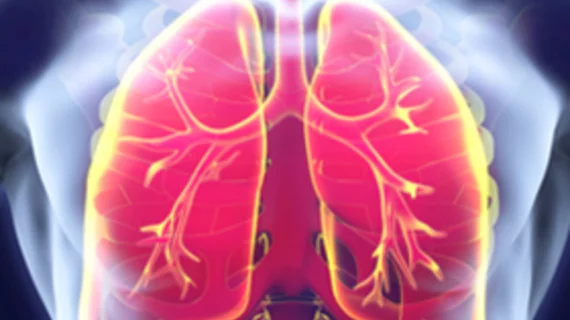Integrating 18FDG-PET/CT radiomic tumor and bone marrow features can help predict outcomes in patients with non-small cell lung cancer, according to a Sept. 17 study published in Radiology.
Fluorine 18–fluorodeoxyglucose (FDG) PET is commonly used for staging cancer, and tumor uptake has been proven to predict the recurrence of cancer. Studies involving radiomic features of lung cancer have mainly focused on integrating basic clinic features such as cancer stage, type of cancer or age for improving outcome predictions. In this study, the researchers focused on a different set of features.
“We hypothesized that integrating primary tumor with tumor penumbra and bone marrow PET signal could define a more precise model for identifying poor lung cancer outcome,” wrote Sarah A. Mattonen, PhD, with Stanford University’s Department of Radiology and colleagues. “This could assist clinicians in stratifying patients at a higher risk of recurrence that may benefit from more aggressive adjuvant and personalized treatment options.”
For their study, Mattonen et al. retrospectively analyzed 227 patients who were separated into cohorts of 136 for training and 91 for temporal validation of a clinical radiomics model. Clinicians contoured each tumor, along with its surrounding penumbra and bone marrow from the L3-L5 vertebral bodies on pretreatment FDG-PET/CT images. This totaled 156 bone marrow and 512 tumor and penumbra features.
Overall, the top performing model included cancer stage, two bone marrow texture features, one tumor with penumbra texture feature and two penumbra texture features. Adding bone marrow features improved the performance of the clinical model, the authors noted.
Additionally, the fully integrated model accurately predicted poor outcomes in an independent group of patients and produced a “binary score” which stratified patients into high and low risk of poor outcome.
“We demonstrated that combining bone marrow features with cancer stage, tumor, and tumor penumbra radiomic features improves prognostic accuracy over stage alone,” Mattonen and colleagues wrote. “This model uses clinical and imaging data that can be collected for these patients and is ready for further validation. However, additional studies investigating the underlying biology responsible for these imaging phenotypes are needed.”

